Yoga, an ancient practice with roots stretching over 3,000 years, is now widely recognised as a holistic approach to health1. The National Institutes of Health (NIH) even classifies it under Complementary and Alternative Medicine (CAM) along with other interventions2.
Yoga supports both physical and mental well-being through a combination of postures (asanas), breathing techniques (pranayama), relaxation, and meditation1,3. It is believed that regular practice can enhance strength, flexibility, and endurance while fostering inner peace, compassion, and emotional balance1.
But can yoga also help with thyroid health? You’ll find the answer in this article. Plus here, we’ll also share details of some yoga asanas for thyroid that can safely be done at home to support the proper functioning of this gland.
Endocrine disorders arise from dysfunctions in the endocrine system, which control hormone production and regulation. Among these, thyroid disorders are some of the most prevalent worldwide. In India, approximately 42 million individuals are affected by different types of thyroid conditions, underscoring a major public health issue4.
The thyroid gland, located at the base of the neck, plays a crucial role in regulating metabolism through the production of hormones like T3 (triiodothyronine) and T4 (thyroxine)5. When the gland produces too much or too little of these hormones, it can lead to disorders such as hypothyroidism (underactive thyroid), hyperthyroidism (overactive thyroid), goitre, thyroid nodules, or autoimmune conditions like Hashimoto’s thyroiditis and Graves’ disease4,5.
Common symptoms of thyroid imbalance may include fatigue, weight changes, mood swings, hair thinning, irregular menstrual cycles, sensitivity to temperature, and dry skin5. These symptoms can be hard to notice and, therefore, can be easily overlooked. This is why understanding and monitoring thyroid health is vital.
Maintaining hormonal balance is essential for overall well-being, as thyroid hormones influence heart rate, digestion, muscle control, brain development, and bone maintenance5. To check your thyroid health, you can take a simple blood test, such as the thyroid profile test, that measures key hormone levels such as T3, T4, and thyroid stimulating hormone (TSH).
Scientific studies suggest that yoga poses for thyroid may offer multiple benefits by addressing some of the root contributors of the condition. Yoga promotes stress reduction, improves blood circulation, and stimulates the endocrine system, which includes the thyroid gland6.
Recent clinical observations support the efficacy of yoga asanas for thyroid problems:
While yoga poses for the thyroid should not replace prescribed thyroid medications, it could be an effective complementary therapy that supports overall thyroid function and improves quality of life.
Yoga might indirectly help reduce thyroid medications. Regular yoga can help lose weight and build muscle mass, which further helps burn fat. This weight loss may help reduce the dose of thyroid medicine one needs in case of hypothyroidism.
Dr. Nayana Shetty, MBBS, MD
Certain yoga poses for the thyroids can help stimulate and support the thyroid gland by improving blood flow to the neck region, activating energy centres (chakras), and aiding hormonal regulation. Below are 6 best yoga for thyroid that you can safely practice at home to support thyroid function:

Steps10:
Duration & Repetitions6:

Steps10:
Duration & Repetitions6:
Benefits6:

Steps10:
Duration & Repetitions6:

Steps10:
Duration & Repetitions6:

Steps:
Duration & Repetitions6:
Benefits6:

Steps10:
Duration & Repetitions6:

Steps13:
Duration & Repetitions13:
Benefits13:
These yoga asanas for thyroid not just support your thyroid health but also contribute to overall physical and mental well-being. But remember, it’s ideal to practise yoga under a trained professional to avoid risks of strain and injury, especially if you are a beginner. It’s always best to start your wellness journey with expert guidance when practising yoga asanas for thyroid problems.
Yoga and meditation can help overcome mental health affections on hypothyroidism like depression and anxiety14.
Dr. Nayana Shetty, MBBS, MD
While yoga for thyroid patients may offer many benefits for thyroid health, there are certain conditions where caution is necessary. Thyroid patients should avoid or modify yoga practice in the following situations10:
Always consult your doctor before starting yoga if you have a medical condition, to ensure safety and avoid complications. Practise under a certified yoga instructor and discuss about what poses you should be doing based on your condition.
Before beginning the practice of yoga for thyroid patients, it’s important to consult your healthcare provider. This is particularly essential if:
A doctor can help you understand your specific condition and guide you on whether yoga is suitable, and if so, what kind of practices would be safe and effective. And remember, yoga can support but not substitute medical care in management of thyroid disorders. So, always follow your doctor’s advice on management along with practising yoga to improve your thyroid and overall health.
Also Read: 8 Health Benefits Of Vajrasana!
Yoga, when practised correctly and consistently, can be a valuable supportive tool in managing thyroid health. It helps by stimulating the endocrine system, improving blood circulation, and reducing stress, which is a known trigger for thyroid imbalance. Studies have shown that yoga may assist in lowering TSH levels, improving lipid profiles, reducing the need for medication, and enhancing overall mental well-being.
However, yoga for thyroid patients is not a replacement for medical treatment. It works best as a complementary practice alongside proper medication and routine monitoring. Always consult your doctor before starting any yoga regimen, especially if you have underlying health issues, to ensure the practice is safe and suitable for your condition. With mindful practice and professional guidance, yoga can become a powerful ally in your journey toward better thyroid health!
Also Read: Benefits of Butterfly Pose (Baddha Konasana) and How to Do it By Dr. Himani Bisht
Yoga should ideally be practised on an empty stomach or with a light stomach. It’s best to avoid practising right after a heavy meal. If you feel weak, a small amount of honey in lukewarm water can be consumed before the session12.
Yoga should be practised in a calm, quiet, and clean environment to help relax the body and mind. Cleanliness of surroundings, body, and mind is essential before starting. Additionally, during your session, try to wear light, comfortable cotton clothes that allow free movement of the body12.
Yoga improves mental health by reducing stress and anxiety, boosting cardiovascular and respiratory function, enhancing flexibility and strength, helping manage metabolic disorders like diabetes, regulating hormonal balance, improving sleep quality, supporting weight management, and promoting overall well-being1,12.
No, yoga is a supportive therapy and should not replace prescribed thyroid medications11. It complements medical treatment and may help improve symptoms but always follow your doctor’s advice regarding medication.
Perform yoga slowly, with awareness of your body and breath. Avoid jerky movements or holding your body tightly. Practice regularly and persistently for the best results and always follow any contraindications or limitations for specific poses12.
Disclaimer: The information provided here is for educational/awareness purposes only and is not intended to be a substitute for medical treatment by a healthcare professional and should not be relied upon to diagnose or treat any medical condition. The reader should consult a registered medical practitioner to determine the appropriateness of the information and before consuming any medication. PharmEasy does not provide any guarantee or warranty (express or implied) regarding the accuracy, adequacy, completeness, legality, reliability or usefulness of the information; and disclaims any liability arising thereof.
Have you been feeling sudden weakness or rapid heartbeats? It might be more than just fatigue. While not always the case, these symptoms can point to hypokalaemia, a condition marked by low levels of potassium in the blood (serum)1,2.
Potassium is an important mineral and the most abundant positively charged ion (cation) inside the cells of our body. It plays a key role in cell function, muscle contraction, and heart rhythm regulation3. Low potassium levels are often linked to underlying conditions such as endocrine disorders. However, it can also result from poor or insufficient dietary intake1.
In this article, we will explore some healthy and delicious fruits high in potassium that can help boost its levels in the body. These potassium rich fruits not only offer a tasty way to support your electrolyte balance but also contribute to overall well-being.
Potassium is a mineral and electrolyte that plays a central role in maintaining the proper functioning of cells, particularly in muscles and nerves. It is crucial for regulating muscle contractions, nerve signals, and intracellular fluid balance4. A deficient or insufficient potassium level can cause symptoms such as muscle weakness, fatigue, and constipation3.
Its importance extends beyond basic cellular activity. Higher potassium intake is associated with significant health benefits, particularly for heart health5. One major meta-analysis involving around 250,000 participants found that for every 1.64 grams (or around 42 millimoles) of daily potassium intake, there was a 21% reduction in stroke risk and a notable trend toward reduced overall cardiovascular disease6.
In short, potassium supports critical bodily functions, especially heart, muscle, and nerve performance, while also helping to protect against serious conditions like stroke and heart disease. Therefore, ensuring adequate potassium in your diet through fruits high in potassium is a simple but powerful step toward better health!
Hyperkalaemia can cause muscle weakness, fatigue, nausea, vomiting, diarrhoea, and cardiac arrhythmias. Thus food-drug interactions must be kept in mind if individuals are already on medicines that increase potassium levels.
Dr. Nayana Shetty, MBBS, MD
The amount of potassium an individual needs in a single day depends on age, sex, and life stage.3 According to the National Academies of Sciences, Engineering, and Medicine (NASEM), here are the recommended Adequate Intakes (AIs):
The potassium AI for children varies specifically by age group7:
Note: These recommendations do not apply to people with kidney disease or those taking medications that affect potassium levels8. For personalised advice on optimal intake, it’s best to consult your doctor.
If you’re concerned about a potential potassium deficiency, a simple blood test, such as the Potassium (K+) Test, can help evaluate your potassium levels.
Potassium is required for several bodily functions. These include:
Adequate potassium helps regulate blood pressure by promoting natriuresis (sodium excretion) and reduces vascular resistance, which helps lower blood pressure3,6. This might contribute to reducing the risk of hypertension and stroke.
Potassium works with sodium to maintain fluid balance in the body3. This helps cells function properly and supports overall hydration.
Potassium supports smooth muscle function, including the muscles of the digestive tract9. This may aid in regular bowel movements and avoid constipation.
Higher potassium intake (especially from fruits) may reduce calcium loss in urine10. This helps in lowering the risk of calcium-based kidney stones.
Potassium from fruits may help maintain bone mineral density by reducing the acid load in the body11. This helps in minimising calcium loss and supports bones.
Potassium plays a role in insulin secretion, and low levels have been linked to an increased risk of type 2 diabetes in some studies12. However, more research is still needed to directly establish a link between potassium intake and its benefits for diabetic patients.
Fruits are an excellent natural source of potassium, offering a variety of health benefits.
In recent decades, shifting dietary habits, marked by increased intake of processed foods and reduced consumption of fresh fruits and vegetables, have contributed to several health issues, including a widespread decline in dietary potassium intake, despite its critical role in maintaining cardiovascular and muscular health5.
Which fruit contains the most potassium is a common question for those looking to boost their potassium intake naturally. Therefore, to naturally support optimal potassium levels, we have compiled a list of fruits containing high potassium for you:

Dried apricots are highly concentrated in potassium; a half cup serving provides 755 mg of potassium, which is around 22% of the daily recommended intake3. Besides potassium, apricots are also rich in carotenoids like β-carotene, which acts as a strong antioxidant and may help lower oxidative stress, support immunity, reduce the risk of heart disease, and protect eye health with age13.
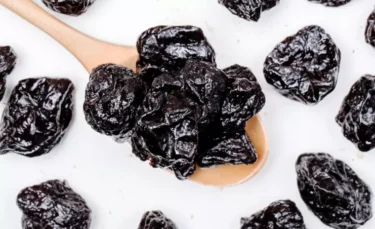
Prunes are rich in potassium; half a cup of dried prunes contain 635 mg of potassium, covering around 19% of the daily recommended intake.3 Prunes are also rich in fibre, sorbitol, and antioxidants. Due to these nutrients, they may also help improve digestion and support bone besides heart health14.
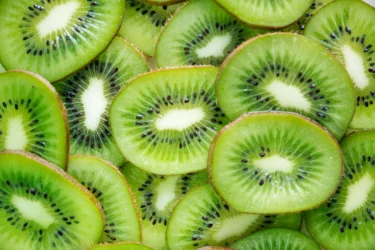
Kiwi provides abundant potassium; one cup of sliced kiwi contains about 562 mg of potassium, about 16.5% of the daily value15. Besides potassium, kiwifruit is also rich in vitamin C, fibre, and antioxidants. Eating them regularly may boost your immune system, support digestion (thanks to an enzyme called actinidin), and improve overall metabolism16.
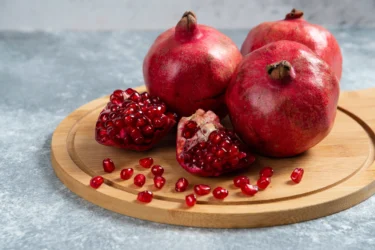
Pomegranates are a good source of potassium; one cup of 100% pomegranate juice provides approximately 533 mg of potassium, contributing about 15.7% of the daily recommended intake15. Drinking pomegranate juice can help reduce oxidative stress and support heart health by slightly improving blood pressure and related risk factors17.

Orange juice is a natural source of fruits high in potassium; one cup of orange juice delivers 496 mg of potassium, about 14.6% of the daily recommended intake3. Regular consumption of 100% orange juice may help reduce inflammation in healthy people and those at risk for chronic diseases18.
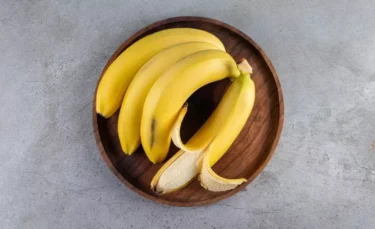
Bananas are well known for their potassium content; a medium banana contains 422 mg of potassium, which is around 12.4% of the daily recommended intake3. A study19 has shown that eating 250 g of bananas before haemodialysis (a process of filtering blood in patients with impaired kidneys) helps avoid low potassium and heart rhythm problems without causing high potassium.
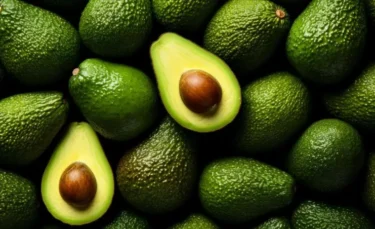
Avocados are rich in potassium; half a piece of avocado contains about 345 mg of potassium, which is around 10% of the daily recommended intake20. Based on a preliminary, uncontrolled study21, adding California avocados to your daily diet may help lower total cholesterol and aid in controlling body weight.
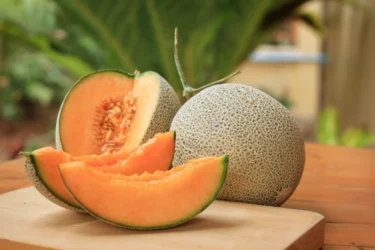
Cantaloupe is a refreshing fruit rich in potassium; half a cup of cubed cantaloupe supplies 214 mg of potassium, or 6.3% of the daily recommended intake.3 Besides potassium, cantaloupe is packed with essential vitamins and minerals that help keep you hydrated with its high-water content. This makes it a tasty and refreshing part of a healthy diet22.
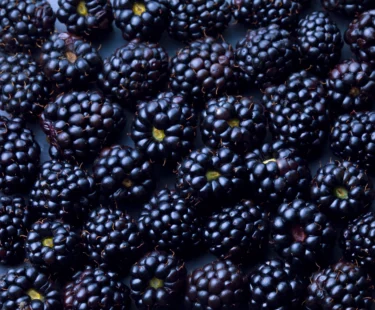
Blackberries are a good source of potassium; one cup of blackberries contains about 211 mg of potassium, contributing around 6.2% of the daily recommended intake16. Blackberries are also used traditionally for diarrhoea, ulcers, inflammation, and diabetes. They are also rich in anthocyanins, which help reduce pain and may have antioxidant effects that contribute to reducing inflammation and supporting general health23.
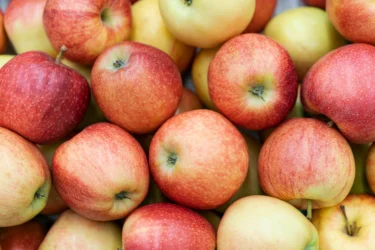
Apples contain moderate potassium levels; one medium apple with skin provides 195 mg of potassium, approximately 5.7% of the daily recommended intake3. Besides potassium, apples are also rich in antioxidants, especially polyphenols, which help reduce oxidative stress and inflammation. They also support gut health by improving the balance of beneficial gut bacteria24.
Knowing the potential benefits and the potassium content in fruits helps you choose the best options to support your health and meet your daily potassium needs. While consuming these fruits is generally healthy, remember some fruits may increase blood sugar levels. Therefore, it’s best to consult with a diabetologist before including them in your routine diet (especially if you are diabetic or at risk).
In case you are a diabetic patient apart from risk of hyperkalaemia there could be a risk of causing glucose spikes while incorporating fruits like banana etc. into your diet with the aim to improve its potassium content. Make sure to do so in a way that your blood glucose levels remain stable. Preferably consult your doctor before doing so and consume the fruits whole with fibre (like seeds or salad) or yogurt to lower the glucose spike.
Dr. Nayana Shetty, MBBS, MD
Also Read: PDW Blood Test: Understanding Its Purpose and Results
Including potassium-rich fruits in your diet is not at all complicated. You can consume the fruit raw or make some simple and delicious dishes with them to boost your intake25:
It should be noted that including fruits containing high potassium in the diet helps maintain potassium balance only when potassium levels are slightly below the normal range or for when an individual is at risk. Dietary potassium is not an alternative for moderate or severely low potassium levels; these conditions often require oral or intravenous potassium supplementation.
Also Read: 8 Types Of Food That Can Help You Fight Anaemia!
While potassium is essential for health, increased levels can be dangerous. Excess potassium levels, known as hyperkalaemia, may lead to serious symptoms, including neuromuscular issues such as fatigue, muscle weakness, and paralysis. It may also lead to cardiovascular symptoms, such as irregular heartbeats or even cardiac arrest1,3.
However, it should be noted that fruits (or even other dietary sources) rich in potassium alone rarely cause hyperkalaemia in healthy individuals. Hyperkalaemia typically results when there is impaired renal excretion or a shift of potassium from cells into the bloodstream.
Certain individuals should be cautious when consuming high-potassium diets or potassium supplements. These include:
Due to the above-mentioned reasons, individuals with underlying health conditions or those on long-term medication should consult a doctor before making any changes to their potassium intake to ensure a safe and balanced dietary approach.
Sometimes patients have too much coconut water regularly, which can lead to high potassium. It is important to consume it in moderation to prevent side effects of excess potassium27.
Dr. Nayana Shetty, MBBS, MD
Also Read: What Causes High Vitamin B12 Levels & How to Manage It
Potassium is a vital mineral that plays a crucial role in maintaining healthy blood pressure, supporting muscle and nerve function, and promoting overall heart health. Fruits are a natural and wholesome source of potassium, making them a safe and effective way to meet daily needs, especially when included as part of a varied and balanced diet. Incorporating potassium rich fruits in the diet, such as bananas, apricots, prunes, and oranges, offers not only this essential nutrient but also other valuable nutrients that contribute to overall wellbeing. They are generally safe and very rarely cause hyperkalaemia in healthy people with normal kidney function. However, individuals with impaired kidney function or those taking certain medications should be cautious and consult a doctor before increasing their potassium intake. That said, a balanced approach in diet (consuming a combination of fruits, vegetables, and whole foods) can be a great way to support the potassium requirements of the body and at the same time offer broader health benefits, reinforcing the importance of nutritious and mindful eating to achieve your health goals.
Yes, both dried and frozen fruits retain potassium, though portion sizes vary26. Dried fruits are more concentrated, so smaller amounts provide similar potassium levels.
You should take potassium supplements only under medical advice, since most people can meet their potassium needs through a balanced diet rich in fruits, vegetables, and legumes3. Talk to your doctor if you believe you might need potassium supplements.
If you are healthy, you cannot overdose on potassium from fruits, as the kidneys eliminate excess potassium through urine. However, people with kidney disease or on certain medications need to be cautious3. Remember moderation in consumption is key.
No, they are not suitable for everyone since salt substitutes often contain high levels of potassium. People with kidney disease or those taking certain medications should consult their doctor before using them to avoid the risk of hyperkalaemia (dangerously high potassium levels)3.
Fruits provide important nutrients like folate and vitamin C, potassium, and dietary fibre. They help keep your digestion healthy, lower the risk of heart disease, diabetes, obesity, and even some cancers. They are also low in fat and calories, especially when not fried or roasted. Aim to include a variety of colourful fruits in your diet. This will give you a range of nutrients24.
27. Hakimian J, Goldbarg S, Park CH, Kerwin TC. Death by Coconut. Circulation: Arrhythmia and Electrophysiology. 2014;7(1):180–181. doi:10.1161/CIRCEP.113.00094. Available from: https://www.ahajournals.org/doi/10.1161/circep.113.000941
Disclaimer: The information provided here is for educational/awareness purposes only and is not intended to be a substitute for medical treatment by a healthcare professional and should not be relied upon to diagnose or treat any medical condition. The reader should consult a registered medical practitioner to determine the appropriateness of the information and before consuming any medication. PharmEasy does not provide any guarantee or warranty (express or implied) regarding the accuracy, adequacy, completeness, legality, reliability or usefulness of the information; and disclaims any liability arising thereof.
Problems with the thyroid gland are very common around the world, including in India. In fact, around 42 million people in India are believed to have some form of thyroid disease1. These issues can happen when the thyroid gland makes too much or too little hormone, or when the gland becomes swollen or develops lumps2.
People with thyroid problems may feel tired, gain or lose weight, feel anxious or low, or notice a swelling in their neck. These signs can be easy to miss or confused with other health issues2. Therefore, it is important to stay vigilant of any new symptoms.
In this article, we’ll talk about some common thyroid problems, the symptoms to look out for, how to test thyroid at home, and when you should visit a doctor for these.
The thyroid is a small gland which is located in front of your neck and looks like a butterfly. It plays an important role in keeping the body healthy by producing thyroid hormones. These hormones help control your metabolism (how your body uses energy) and are important for growth, brain development, and many other functions3.
There are two main types of thyroid hormones: T3 (triiodothyronine) and T4 (thyroxine). T4 is made in the thyroid gland and then changed into the more active form, T3, in different parts of the body, like the brain, muscles, and fat tissue4. Also some amount of T3 is produced from the gland itself. These hormones help in proper utilisation of energy by the body and regulate response to changes like cold weather or fasting3,4. Thyroid hormones also affect how the body handles fats and sugars, how sensitive the body is to insulin, and even how cholesterol is managed4.
The production of thyroid hormones is controlled by signals from certain regions of the brain (the hypothalamus and the pituitary gland). The brain releases hormones like TRH (thyrotropin-releasing hormone) and TSH (thyroid-stimulating hormone) to tell the thyroid when to make more or less of these hormones4.
Since thyroid hormones are involved in so many bodily processes, keeping the thyroid healthy is important for overall well-being, especially for energy, weight, temperature regulation, and metabolism.
Thyroid problems can affect many parts of the body, and the symptoms can vary depending on whether the thyroid is overactive (hyperthyroidism) or underactive (hypothyroidism)1.
Wondering how do I know if I have thyroid problems? Let us find out!
Common symptoms of an overactive thyroid (hyperthyroidism) include2:
Common symptoms of an underactive thyroid (hypothyroidism) include2:
Symptoms related to thyroid swelling (goitre) can happen in both overactive and underactive thyroid conditions, or even when hormone levels are normal. These may include2:
The answer is, yes! You can check certain aspects of your thyroid health at home, basis which you can decide the further course of action (whether or not to visit a doctor).
Checking thyroid at home starts by being aware and observant of symptoms of thyroid disease. Alongside, some self-examination methods and at-home thyroid function tests can be used to assess your thyroid gland.
While checkup at home offers a convenient and private way to assess your thyroid health, it’s important to understand their benefits and limitations before relying solely on them5:
So, while it’s possible to check your thyroid at home, it’s crucial to understand the pros and cons of this. Although, this should not replace regular checkups or a complete diagnostic assessment by a doctor, it can, however, be useful in raising awareness of potential issues and taking medical advice promptly.
Irrespective of which ever home test you perform to assess thyroid function, you may make a mistake. Examination by a professional and blood test is the best way. If you are concerned about your health, it is always recommended to consult your doctor.
Dr. Nayana S Shetty, MBBS, MD
Many people wonder, how do I know if I have thyroid problems which might need an expert doctor’s consultation . So, to answer this question, we are listing a few simple ways by which you can check for possible thyroid issues from the comfort of your home:
Keep track of any unusual changes in your body or how you’re feeling. Make a note of things like tiredness, sudden weight changes, mood swings, or feeling too hot or too cold, as these could be signs of a problem with your thyroid.
This method helps you check for swelling or lumps in the thyroid area.6
How to do it6:
Note: If you see anything unusual, do not panic; not all lumps mean something serious. However, it’s important to talk to a doctor and get checked properly, especially if the lump stays or gets bigger over time.
Use this as a complementary method to the clinical examination by a health care expert like an Endocrinologist.
This method checks your body’s resting temperature, which may be deviated from the normal range in people with thyroid problems7,8.
How to do it:
Note: This method is not always reliable and can be affected by other factors like illness or hormonal changes.
Also Read: Best Yoga Asanas for Thyroid You Can Safely Do at Home
This can be the most common and reliable method for thyroid assessment at home. You can easily order a thyroid blood test from home which checks for your thyroid hormone levels.
Remember that an abnormal check may not always indicate a significant problem, just as a normal test does not ensure everything is fine. It’s always preferable to speak with a healthcare professional for a proper diagnosis and tailored guidance if you observe anything troublsome.
When on thryoid medications, blood tests should be repeated every 3 months to assess improvement and ensure that adequate dose of thyroxine hormone is being received.
Dr. Nayana S Shetty, MBBS, MD
It’s important to know when home checks and symptoms should lead you to seek medical advice. If you notice any of the following signs or changes in your health, it’s a good idea to consult a doctor:
If you notice any of these problems (even if they seem mild), it’s always safer to consult a doctor and get your thyroid checked.
Also Read: Natural Home Remedies For Vomiting
Thyroid test at home can be a helpful first step in noticing signs of thyroid problems. Simple methods like a neck self-exam, monitoring your body temperature, and being aware of common symptoms can alert you if something seems off with your thyroid. It is important to keep in mind that while these home checks are useful, they are not a substitute for medical testing.
A thyroid blood test is the most reliable technique to determine if your thyroid gland is working normally. Additionally, regular checkups with your doctor can help catch issues early, even if you don’t have clear symptoms.
Remember, in rare cases, thyroid problems can become serious emergencies. So, if you notice unusual symptoms or anything concerning during a home check, don’t delay and talk to a doctor. Keeping an eye on your thyroid health can go a long way in maintaining your overall well-being!
Also Read: Best Home Remedies for Appendicitis Recovery
Yes, thyroid problems may affect other parts of your body. Since thyroid hormones influence many body systems, including the heart, brain, muscles, and metabolism, thyroid problems can cause wide-ranging symptoms. This may affect other vital organs and cause complications if left unaddressed3.
If you have thyroid problems or have any risk factors (like family history or symptoms), your doctor may recommend regular thyroid testing (every 6 to 12 months)12. Otherwise, routine checkups during health exams are a good opportunity to screen for thyroid issues. Your doctor can suggest the ideal frequency of testing based on your specific conditions.
During pregnancy, hormones like oestrogen and beta-HCG increase thyroid-binding globulin, a protein that carries thyroid hormones in the blood. As more hormone is bound, total T4 levels rise. However, free T4 (the active form) and TSH usually remain unaltered. So, it’s normal to see high total T4 with normal TSH and free T4 in pregnancy, especially 2nd trimester onwards3. Therefore, to make an accurate diagnosis, doctors interpret thyroid tests carefully during pregnancy.
Yes, it could be possible. The Adam’s apple is a bump that you can see in the front of your neck (more clearly observed in men). It is situated above the thyroid gland. During a self-exam, you should feel for the thyroid just below the Adam’s apple and above the collarbone (on either side of your windpipe)5. This will help you avoid any confusion.
Thyroid diseases are usually manageable with proper treatment. For an overactive thyroid, doctors may prescribe medications to control symptoms and drugs that reduce hormone production. For an underactive thyroid, hormone replacement therapy is used to restore normal hormone levels2. Treatment helps avoid serious complications and improves quality of life. Therefore, for a precise assessment of your thyroid health, always seek medical advice.
Disclaimer: The information provided here is for educational/awareness purposes only and is not intended to be a substitute for medical treatment by a healthcare professional and should not be relied upon to diagnose or treat any medical condition. The reader should consult a registered medical practitioner to determine the appropriateness of the information and before consuming any medication. PharmEasy does not provide any guarantee or warranty (express or implied) regarding the accuracy, adequacy, completeness, legality, reliability or usefulness of the information; and disclaims any liability arising thereof.
Non-alcoholic fatty liver disease (NAFLD) is often referred to simply as fatty liver. It is one of the most common liver conditions affecting people worldwide1. This condition involves the buildup of excess fat in the liver that is not caused by the consumption of alcohol2.
In India, adult NAFLD rates have been reported as high as 38.6% in adults and 35.4% in children, and the prevalence is known to increase with age and lifestyle related health issues3. Fatty liver can range in severity from simple fat accumulation (non-alcoholic fatty liver or NAFL) to a more serious form called non-alcoholic steatohepatitis (NASH), which can lead to liver fibrosis, cirrhosis, or even liver cancer if left unaddressed1.
The good news is that regular physical activity is one of the most effective ways to manage fatty liver1,3. In this article, we will explore the causes and symptoms of fatty liver and highlight the most effective exercises you can incorporate into your routine to support liver health and manage this condition. Keep in mind that choosing the best exercise for fatty liver means focusing on activities that improve cardiovascular health as well as promote weight loss.
Fatty liver develops when there is an abnormal buildup of fat in liver cells, more than 5% of the liver’s weight2,5. This fat accumulation occurs due to various conditions:
Beyond this, several other conditions and factors can contribute to NAFLD:
NAFLD or NASH is now often referred to as Metabolic Dysfunction-associated Steatotic Liver Disease (MASLD), and the most common cause for this is obesity or being overweight22,23.
Dr. Nayana Shetty, MBBS, MD
Most people with fatty liver disease (especially in the early stages) may not experience any symptoms1. However, as the condition progresses, some people might start to notice signs that something isn’t quite right.
Below, we have mentioned some common symptoms of a fatty liver:
It’s important to note that these symptoms are not exclusive to fatty liver disease and may be associated with other health conditions. However, as the condition progresses to NASH and cirrhosis, signs like abdominal/leg swelling, itchy skin, and spider-like veins may appear9. That’s why regular health check-ups are crucial, especially if you have risk factors like obesity, diabetes, or high cholesterol.
If you’re concerned about your liver health, you can get a simple test, such as Liver Function Test (LFT), to check how well your liver is working. This blood test measures levels of liver enzymes and can help detect early signs of liver problems.
One of the most effective ways to improve fatty liver disease is through regular exercise. Are you wondering what the best exercise for fatty liver is? The answer lies in a combination of aerobic activities like walking and strength training for lasting benefits. Studies have shown that both aerobic (cardio) and resistance (strength) training have been proven to reduce fat in the liver10,11.
Here are some simple and effective exercises for fatty liver that you can include in your daily routine:




Note: While exercise and yoga offer certain benefits for fatty liver, it is important to perform activities within your comfort level and under the guidance of fitness and yoga professionals. Additionally, if you have any underlying health conditions, it is important to take medical clearance with the medical practitioner before pursuing any exercise regime.
There is a growing trend pf NAFLD in children which is closely linked to rising childhood obesity24.
Dr. Nayana Shetty, MBBS, MD
Yoga is a powerful tool that not only reduces stress but also helps stimulate internal organs like the liver, enhancing detoxification and improving its function16. Hence, it can be particularly beneficial for individuals with fatty liver disease. Here are some asanas that you can try out:
Steps17:


Steps19:
Duration and Frequency18:

Steps19:
Duration and Frequency:
Benefits19:

Steps17:
Duration and Frequency:
Benefits17:

Steps17:
Duration and Frequency:
Benefits17:
Note: Always practice yoga for fatty liver with awareness and within your comfort level. If you have any underlying health conditions, recent surgeries, or are pregnant, consult your doctor before starting20. It’s best to learn and perform yoga under the guidance of a certified yoga instructor to ensure proper technique and safety. Ideally, practice yoga in the early morning or at a time when your stomach is empty for better results and comfort17.
No particular exercise can specifically target the fat in liver. Generally incorporating any type of physical activity is one of the many lifestyle measures that can be taken to inch towards a healthy liver. When concerning symptoms do show up, consulting your doctor is important.
Dr. Nayana Shetty, MBBS, MD
Also Read: Signs You May Have Liver Stress
In addition to medical guidance and structured treatment, individuals with fatty liver disease can adopt several practical lifestyle measures to support liver health:
Also Read: Exercises for Hernia. Dos and Don’ts
Fatty liver disease often develops silently, but timely medical consultation is advised when you notice the above-mentioned symptoms to rule out this condition. If the disease progresses, it becomes crucial to seek immediate medical attention. You must visit the doctor if you experience any of the following, as these may indicate that the liver disease has advanced:
As NAFLD progresses, it may develop into non-alcoholic steatohepatitis (NASH), a more severe form that includes inflammation and liver cell damage. If left unmanaged, NASH can progress to fibrosis, cirrhosis, or liver cancer2. Therefore, regular medical check-ups and early lifestyle interventions such as exercise for fatty liver are key to managing fatty liver disease and avoiding long-term complications.
Also Read: Safe Stretching Exercises You Can Try If Suffering From Phimosis
Exercise and yoga play a vital role in managing fatty liver disease by promoting weight loss, enhancing insulin sensitivity, reducing liver fat, and improving overall metabolic health. While there is no single best exercise for fatty liver approved solely for NAFLD, consistent physical activity, combined with mindful practices like yoga, can significantly halt the progression of the disease.
By adopting a healthier lifestyle that includes regular exercise, a balanced diet, stress reduction, and mindful habits such as yoga, individuals can not only manage fatty liver more effectively but also improve their overall well-being. Regular consultation with a doctor with early intervention and sustained lifestyle changes is key to avoiding complications and leading a healthier, more energetic life.
Also Read: 6 Best Yoga Poses & Exercises To Deal With Piles
Exercise is an important aspect of managing fatty liver disease that can significantly help reduce liver fat. However, it works best when combined with a healthy diet and lifestyle changes20.
No, moderate-intensity exercise is sufficient for most people to improve liver health11. Vigorous or high-intensity exercise can help, but it is not mandatory and should be done only if comfortable and safe.
Always start at your own pace and avoid pushing yourself too hard. If you experience pain, dizziness, or difficulty breathing during exercise, you should stop immediately and consult a doctor. Individuals with existing health conditions should always seek medical advice before starting any new exercise or yoga regimen.
22. Li B, Zhang C, Zhan YT. Nonalcoholic Fatty Liver Disease Cirrhosis: A Review of Its Epidemiology, Risk Factors, Clinical Presentation, Diagnosis, Management, and Prognosis. Can J Gastroenterol Hepatol. 2018 Jul 2;2018:2784537. doi: 10.1155/2018/2784537. PMID: 30065915; PMCID: PMC6051295.Available from: https://pmc.ncbi.nlm.nih.gov/articles/PMC6051295/
23. Sharma B, John S. Nonalcoholic Steatohepatitis (NASH) [Updated 2023 Apr 7]. In: StatPearls [Internet]. Treasure Island (FL): StatPearls Publishing; 2025 Jan-. Available from: https://www.ncbi.nlm.nih.gov/books/NBK470243/
24. Zhang X, Wu M, Liu Z, Yuan H, Wu X, Shi T, Chen X, Zhang T. Increasing prevalence of NAFLD/NASH among children, adolescents and young adults from 1990 to 2017: a population-based observational study. BMJ Open. 2021 May 4;11(5):e042843. doi: 10.1136/bmjopen-2020-042843. PMID: 33947727; PMCID: PMC8098935. Available from: https://pmc.ncbi.nlm.nih.gov/articles/PMC8098935/#:~:text=Prevalence%20of%20NAFLD/NASH%20and%20its%20variations%20among%20CADs%20and,SDI%20regions%20(table%201).
Disclaimer: The information provided here is for educational/awareness purposes only and is not intended to be a substitute for medical treatment by a healthcare professional and should not be relied upon to diagnose or treat any medical condition. The reader should consult a registered medical practitioner to determine the appropriateness of the information and before consuming any medication. PharmEasy does not provide any guarantee or warranty (express or implied) regarding the accuracy, adequacy, completeness, legality, reliability or usefulness of the information; and disclaims any liability arising thereof.
Psyllium husk or isabgol husk is a natural polymer1,2. It’s made from the outer layers of the seeds of Plantago ovata Forsk (P. ispaghula Roxb.). Isabgol is rich in fibre and mucilage. Mucilage is a colourless gelling agent capable of expanding in volume as it absorbs water up to 40 times its weight1. Dietary fibre obtained from psyllium husk may be used in processed foods, as an ingredient of foods, and in health supplements2.
Originating from Western Asia, isabgol is an annual herb. Indian Muslims introduced its medicinal properties from seeds collected firstly from some wild species3. India is presently the major producer and exporter of isabgul husk in the world4.
The nutrients present in psyllium husk are as follows2:
Isabgol has several advantages for maintaining a healthy life. It is safe and effective for some conditions if taken in a recommended dose.
Isabgol may restrict butyric acid’s antineoplastic activity. Thus, it’s considered beneficial in preventing colorectal cancer5.
Isabgol fibres (soluble and insoluble) have significance in reducing total low-density lipoprotein and serum cholesterol. Thus, it helps reduce the risk of heart diseases5.
Supplementing isabgol in the diet is helpful in managing haemorrhoids. Since isabgol helps in dealing with both constipation and loose stools, it would also help in managing haemorrhoids. In a comparative study8, people treated with a placebo of B vitamins had no major difference, and those consuming isabgol had a reduction of bleeding.
Studies9 on a population with type II diabetes have shown that isabgol husk effectively improved glycaemic and lipid control after meals.
Including psyllium in your diet may help regulate your blood sugar levels and improve your overall metabolic health. Psyllium has the ability to enrich certain foods like breakfast cereals, pasta, bread, and some snacks, which can be beneficial for individuals with lipid and carbohydrate metabolism disorders, especially obese adolescents and children.
Dr. Siddharth Gupta, B.A.M.S, M.D (Ayu)
Seek advice from your Ayurvedic physician on dosage as per your health condition4.
Also Read: Instant Home Remedies for Digestive Problems
Side effects observed with isabgol consumption are as follows:
Also Read: Lady Finger (Bhindi): Uses, Benefits, Side Effects and More!
Keep the following points in mind:
Incorporating psyllium into your diet may be beneficial as psyllium husk might be a natural prebiotic. Psyllium husk contains about 15% fermentable fibre, which can support the growth of beneficial bacteria in your gut.
Dr. Rajeev Singh, BAMS
Also Read: Triphala: Uses, Benefits, Side Effects & More!
Yes, many researchers have investigated the potential health benefits of isabgol husk, particularly in weight loss and controlling obesity in children and adults4.
Yes, some studies6 have shown that taking isabgol husk for weight loss may lead to menstrual disturbances like prolongation of the cycle by 7-10 days and irregular menstrual cycles.
No, you should avoid consuming isabgol while fasting due to potential reductions in blood sugar levels caused by isabgol2,5.
Yes, isabgol should be taken with a sufficient amount of water or any other fluid like milk5.
Yes, isabgol may help in relieving inflammation, as it has anti-inflammatory properties7.
No, there are no reported benefits of isabgol husk in skin treatment.
Disclaimer: The information provided here is for educational/awareness purposes only and is not intended to be a substitute for medical treatment by a healthcare professional and should not be relied upon to diagnose or treat any medical condition. The reader should consult a registered medical practitioner to determine the appropriateness of the information and before consuming any medication. PharmEasy does not provide any guarantee or warranty (express or implied) regarding the accuracy, adequacy, completeness, legality, reliability or usefulness of the information; and disclaims any liability arising thereof.
Jambolan, Indian blackberry, jamun, black plum, java plum, Malabar plum, Portuguese plum, purple plum, damson plum, and Jamaica are common names for Jamun fruit in english. The tree is found throughout the Indian subcontinent and many other South Asian countries, including Burma, Bangladesh, Nepal, Pakistan, Indonesia, and Sri Lanka[6].
It is a powerhouse of nutrients and medicinal properties. This deep purple fruit is widely cherished for its unique sweet-tart flavor and numerous health benefits. Rich in vitamins, minerals, and antioxidants, Jamun has been used in Ayurvedic and traditional medicine for centuries to help manage diabetes, improve digestion, and boost immunity.
Did you know?
Anthocyanins, ellagic acid, glucoside, isoquercetin, kaemferol, and myrecetin are among the compounds found in jambolan. The alkaloid jambosine and the glycoside antimellin or jambolin are said to be present in the seeds[1].
The nutritional content found per 100 g of edible jamun fruit is[2]:
Various parts of the Jamun plant are known for different medicinal benefits, as listed below[1].
I find it interesting that Jamun wood is known for its strength and resistance to water and termites. This means that it can withstand moisture and insect damage, making it a durable and long-lasting material.
Dr. Siddharth Gupta, B.A.M.S, M.D (Ayu)


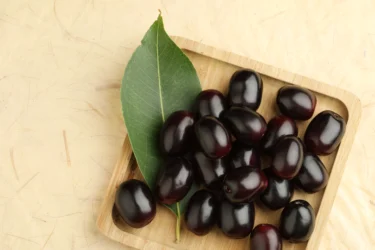




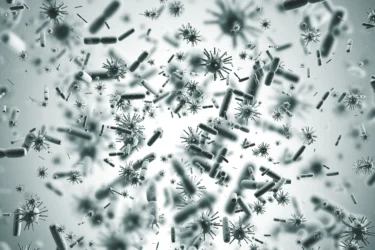

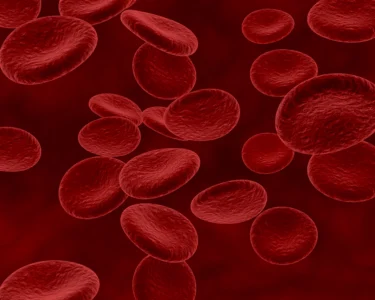
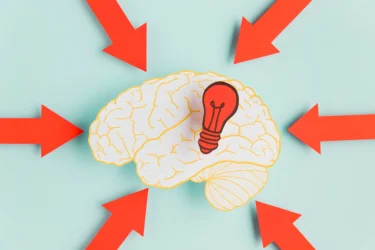
In my experience, I have observed that consuming Jamun fruit extract may have positive effects against obesity. It appears to regulate gut microbial populations, leading to improvements in weight management, insulin sensitivity
Dr. Rajeev Singh, BAMS
Also Read: Papaya Leaves and Seeds to Treat Fever and Other Ailments
Consult an ayurveda doctor and understand the correct dose and form of jamun (Java plum fruit) that can help improve your health.
The following parts of jamun can be used for medicinal benefits.
Also Read: Low Glycemic Index Fruits for Diabetic People
As reported in the literature, flatulence, delayed digestion, laryngitis, inflammation in the lungs, and emphysema are all possible side effects of Jamun fruit. This may vary from person to person depending on the dosage and duration of the product consumed.
Jamun (Java plum) has been used for its medicinal properties in Ayurveda. Different parts of this tree are used for different ailments. It is best to consult an ayurveda doctor and understand the form, dosage and duration of jamun extracts that can be helpful based on your health condition. People with ongoing medicines and conditions like diabetes, liver disease, etc, should speak to their doctor before trying any ayurvedic or herbal remedy.
Also Read: Lychee: Uses, Benefits, Side Effects and More By Dr. Rajeev Singh
Anthocyanins, ellagic acid, glucoside, isoquercetin, kaemferol, and myrecetin are among the compounds found in jambolana[1].
Yes, it is good for the liver. E. jambolana showed liver protective activity in rats by lowering the liver serum enzyme levels that were high and improving the production of protein and albumin by repairing liver cells[3].
Jamun is known as Black Plum, Java Plum, or Indian Blackberry in English. Other names like Jambolan, Malabar plum, Portuguese plum, purple plum, etc. are common names of jamun[1].
Yes, jamun fruit is good for diabetes. The antidiabetic activity of E. jambolana seed powder was observed as increased body weight and improvement in peak blood glucose levels in rat study[3].
Jamun can be good for dogs in small quantities. It is rich in antioxidants and vitamins, but excessive consumption can cause digestive issues, so it’s best to consult with a veterinarian before adding it to your dog’s diet.
Jamun fruit has a unique flavor that is typically described as sweet and tangy with a slightly astringent aftertaste. Its taste can vary depending on the ripeness, but it generally combines elements of sweetness and tartness, making it distinctive among fruits.
No, jamun fruit does not cause cold. Cold viruses are typically responsible for causing colds, not fruits. Jamun is rich in vitamin C and antioxidants, which can support immune health and may help prevent colds, but it does not directly cause them.
There is no direct evidence suggesting that jamun causes acne. However, individual reactions to foods vary, and consuming excessive amounts of sugary fruits like jamun could potentially contribute to acne in some people prone to breakouts. As part of a balanced diet, moderate consumption of jamun is unlikely to cause acne for most individuals.
Jamun can cause gas or bloating in some individuals, particularly if consumed in large quantities or if they have a sensitive digestive system. Its high fiber content may stimulate bowel movements and gas production. Adjusting portion sizes and observing personal tolerance can help mitigate these effects.
Blueberry and jamun (Indian blackberry) are not the same fruit. They differ in appearance, taste, and nutritional content. Blueberries are smaller with a sweet flavor, while jamun is larger, purple-black, and has a unique tangy-sweet taste. Both are rich in antioxidants but come from different plant species.
Yes, consuming jamun can sometimes cause black stool due to its natural pigments and high iron content. This discoloration is typically harmless and temporary but consulting a doctor if concerned is advisable, especially if accompanied by other symptoms.
Jamun is generally considered beneficial for kidney health due to its diuretic properties, which may help promote urine production and support kidney function. However, individuals with kidney disease should consult a healthcare provider to determine if jamun is suitable for their specific condition and dietary needs.
Yes, jamun can be beneficial for acidity. It has a natural alkaline effect that can help neutralize acid in the stomach, providing relief from acidity and heartburn. However, individual responses to foods can vary, so it’s advisable to consume them in moderation and observe personal tolerance levels.
Yes, jamun is high in potassium. This mineral helps regulate blood pressure, supports heart health, and balances electrolytes in the body.
Yes, jamun is good for the stomach. It aids digestion, relieves constipation, and helps treat gastric disorders due to its high fiber content and natural astringent properties.
Disclaimer: The information provided here is for educational/awareness purposes only and is not intended to be a substitute for medical treatment by a healthcare professional and should not be relied upon to diagnose or treat any medical condition. The reader should consult a registered medical practitioner to determine the appropriateness of the information and before consuming any medication. PharmEasy does not provide any guarantee or warranty (express or implied) regarding the accuracy, adequacy, completeness, legality, reliability or usefulness of the information; and disclaims any liability arising thereof.
Mustard oil is versatile and used in many parts of the world. It is popularly known as Sarson ka Tel in India and is a key ingredient found in every kitchen. Mustard oil has a strong flavour and enhances the taste of several dishes. Not only that, but it also has numerous health benefits.
But with the fear of cholesterol and an upswing in heart diseases, many people have now become cautious of the kind and quality of oil that they consume on a daily basis. This has led to a widespread increase in the sale of healthy oils such as Olive oil, Sunflower oil, Rice Bran oil and Grapeseed oil.
It is also worth noting that mustard is good for diabetes, owing to its anti-inflammatory properties. So, it is considered one of the ideal oils that can be used in recipes for diabetes.
Mustard oil has about 60% monounsaturated fatty acids(MUFA)(42% erucic acid and 12% oleic acid); it has about 21% polyunsaturated fats(PUFA) (6% omega-3 alpha-linolenic acid(ALA) and 15% omega-6 linoleic acid(LA)) and it has about 12% saturated fats1.
This optimum ratio of omega-3 and omega-6 fatty acids and low content of saturated fats makes mustard oil more beneficial and preferred over several other oils available in the market.
Mustard oil is reddish-brown or amber in colour and is known for its strong smell and pungent, sharp flavour. The pungency of mustard oil is due to the presence of allyl isothiocyanate. This fatty vegetable oil is obtained by pressing mustard seeds.
For now, let’s understand Mustard Oil and its benefits in detail.
Mustard oil is a healthy edible oil it is low in Saturated fatty acids (SFA), high in MUFA and PUFA, especially alpha-linolenic acid and has a good LA: ALA ratio (6:5).
In Myocardial infarction (MI) patients using mustard oil, there was a reduction in arrhythmias, heart failure and angina2. Thus, mustard oil is considered a healthy choice for patients with cardiovascular disorders.
N6 (linolenic acid) and N3 (alpha-linolenic acid) are essential fatty acids that have been proven to be beneficial for the body. N6 PUFA lowers LDL cholesterol but can also decrease HDL3, whereas N3 PUFA may lower triglycerides, blood pressure, inflammation, improve vascular function and sudden death.
Since ancient times, mustard oil has been used to soothe colds, coughs and other respiratory illnesses and allergies.
Inhaling steam containing mustard oil has been shown to clear respiratory congestion4. Also, a concoction made by heating mustard oil, a few cloves of garlic and 1 teaspoon of ajwain, when massaged on our feet and chest, provides relief from cold and cough. Mustard oil may also show positive effects in patients suffering from sinusitis4.
Glucosinolate, available in mustard oil, which accounts for antibiotic, fungicidal and cancer prevention qualities, serves as a therapeutic for human health. It thus protects us from colorectal and gastrointestinal cancers5.
Allyl isothiocyanate serves as an antifungal agent, which protects food from fungal growth and reduces infection5.
Mustard oil is a major source of all fats required by our body to perform diverse biological functions as components of plasma, cell lipids and cell membranes. Mustard oil reduces cholesterol and improves the membrane structure of red blood cells (RBC)6.
Mustard oil is a natural stimulant that is known to stimulate our sweat glands, thereby improving blood circulation throughout the body. By increasing blood circulation in the entire body, it also relieves and rejuvenates stressed and overworked muscles. It also helps to lower body temperature and remove toxins from the body7.
A regular massage with mustard oil helps in relieving aching joints and muscles. Arthritis patients also experience relief and comfort after a massage with mustard oil, thanks to the presence of Omega-3 fatty acids that help to ease stiffness and pain caused due to arthritis8, 9.
The composition of mustard oil is based on our body’s requirements. This oil has <7% saturated fat, high amounts of monounsaturated fatty acids, ranging from 3.6-32.2%. It also contains a considerable amount of linoleic (18:2) and linolenic acids (18:3)6.
The optimum range of omega-3 and omega-6 fatty acids and vitamin E provides the required nutritional value and boosts our immune system6.
The amount of vitamin E in the alpha-tocopherol present in mustard oil has beneficial effects in controlling diabetic hazards5.
Trans fat is the major cause of insulin failure and high oxidation of fat. The absence of trans fat in mustard oil thus helps maintain insulin levels, which in turn regulates our blood sugar levels.
Mustard oil is extremely useful and can be consumed by people who are underweight. It makes you want to eat more by pumping your stomach and facilitates the secretion of gastric juices and bile, which is known to create the feeling of hunger10.
Research suggests that mustard oil may also help in slowing down the growth and spread of certain types of cancer cells in your body11.
Massage in infancy with mustard oil helps improve growth and post-massage sleep. Massage with mustard oil helps improve the weight, length and midarm and midleg circumferences as compared to infants without massage12.
Mustard oil helps strengthen your gums and makes it easier to remove the plaque. Plaque is generally formed due to bacteria that are surrounded by fatty membranes. Swishing mustard oil in our mouth can help loosen the fat-soluble bacteria and further prevent gum bleeding.
Mustard oil contains alpha fatty acids that keep our hair hydrated and lively and help it to grow faster10. Mustard oil is also a rich source of antioxidants, minerals like iron, calcium and magnesium and vitamins like A, D, E and K, all of which are important for hair growth.
The antifungal properties of mustard oil also prevent the development of fungus and dandruff on our scalp7.
Mustard oil is rich in vitamin B complex, vitamin A, vitamin E, calcium, protein and omega 3 fatty acids. This helps reduce fine lines and wrinkles13. It also helps to remove tan from the skin. Mustard oil also works wonders if you have chapped lips.
The anti-bacterial and anti-fungal properties of this oil prevent the development of acne and keep our skin clean and glowing4.
In my experience, I have found that mustard oil has been traditionally used as a rubefacient and irritant due to its topical irritant effects. When applied to the skin, mustard oil can cause a warming sensation and increased blood flow to the area, which may help alleviate pain.
Dr. Siddharth Gupta, B.A.M.S, M.D. (Ayu)
Read More: 7 Home Remedies for Glowing Skin.
The pungent and strong smell of mustard oil makes it a natural mosquito repellent. Rub a few drops of mustard oil on the skin and drive mosquitoes away.
Also Read: 21 Healthy Benefits Of Almonds: Facts And FAQs
Also Read: Is Palm Oil Bad for You?
Mustard and sunflower oil are the two most used oils in India. The consumerist-oriented market has spoiled people with choices, with avocado, groundnut, and olive oil running the race as well. With being the two most popular cooking oils, the debate on which ranks higher in benefits has been going on for a long time.
Mustard oil, derived from mustard seeds, is dark yellow and has a pungent odour. Mustard oil is widely used as cooking oil in major Indian households, as it has the benefit of not accumulating in the blood vessels. It contains healthy fats like omega-3 and 6, along with helping reduce cholesterol levels. Mustard oil for hair oiling has been used for centuries. Consumption of mustard oil is recommended to be done in moderate amounts, as it contains considerable amounts of erucic acids. Too much mustard oil can cause anaemia or diarrhoea.
On the other hand, refined sunflower oil is a chemically-treated oil that has been made to look clearer by removing impurities, contaminants and odour. Not many benefits of refined oil besides the fact that it is made to cater to the customers’ needs, like refined oil for heart patients. The harmful effects of refined oil are based on the fact that it is chemically treated. The process of refining involves nickel, in addition to sodium hydroxide and preservatives, which are harmful to the digestive system in the long run.
Also Read: Eat These 10 Foods To Fight Fatigue!
Disclaimer: The information provided here is for educational/awareness purposes only and is not intended to be a substitute for medical treatment by a healthcare professional and should not be relied upon to diagnose or treat any medical condition. The reader should consult a registered medical practitioner to determine the appropriateness of the information and before consuming any medication. PharmEasy does not provide any guarantee or warranty (express or implied) regarding the accuracy, adequacy, completeness, legality, reliability or usefulness of the information; and disclaims any liability arising thereof.
Oedema is a common condition that affects many people all over the world. In simple terms, oedema is defined as swelling that occurs due to fluid accumulation in the tissues, and is particularly seen in the hands, feet, ankles, arms, and legs. There are many factors that can lead to oedema, such as heart or kidney diseases, less protein in blood, lung infection and poor blood flow, which requires medical attention when severe1. Additionally, it is necessary to know that even the foods you eat can play a crucial role in avoiding and managing the oedema.
In this article, we will discuss the nature of oedema, types of food that can worsen oedema, explore healthier alternatives, and various lifestyle changes that may help in managing and avoiding this condition. Furthermore, we will also discuss oedema that occurs during pregnancy and answer some frequently asked questions.
Did you know?
Oedema occurs when fluid leaks from small blood vessels into nearby tissues, leading to the following symptoms1.
The types of oedema are based on the area of the oedema and its root cause. Some well-known types of oedema include:
A healthcare provider will examine the affected area, inquire about medical history, any trauma, onset, position change, triggering factors, and may request additional tests to determine the root cause of oedema. Some possible tests include blood tests, ultrasound exams, vein studies, or other necessary diagnostic studies8. Mild oedema usually resolves on its own, but more severe cases may require medication to manage the underlying cause1.
Avoid consuming pickled vegetables if you have edema. These foods are high in sodium due to the pickling process, which involves soaking them in a solution containing salt and vinegar. High sodium intake can worsen fluid retention and exacerbate edema symptoms. Opt for fresh vegetables instead to help manage edema more effectively
Dr. Siddharth Gupta, B.A.M.S, M.D (Ayu)
Foods that may worsen oedema include:

High salt intake increases the sodium content in your body, which retains more fluid and worsens oedema3. High sodium is found in unhealthy foods like fast foods, sauces, canned soups, deli meats, and bakery productions.
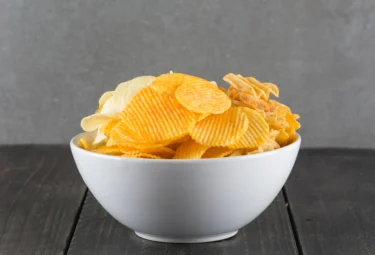
Processed foods are not only high in fat, they may also cause edema. Examples are chips, crackers, cookies, candy, and ice cream.
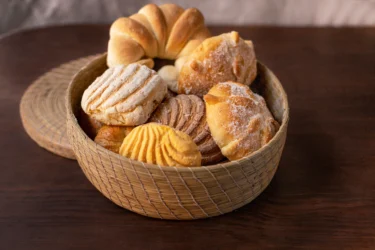
Fat-rich foods such as baked goods, meats, and cheese take longer to digest, which may lead to bloating and oedema.

Foods and drinks that cause inflammation may worsen oedema. Common examples include refined sugars, artificial sweeteners, trans fats, and alcohol2.

Lactose, found in dairy products like milk and ice cream, can lead to an upset stomach and bloating in people who are lactose intolerant. Probiotic-rich yogurt or lactose-free alternatives might help in such individuals.
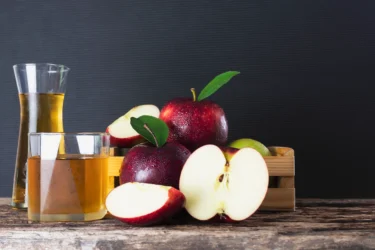
Some foods can trigger stomach upset and add to oedema. These include:
High-processed refined carbohydrates such as pasta may also increase water retention in the body. It is best to avoid these if you have edema and opt for healthier options.
Dr. Rajeev Singh, BAMS
Knowing what to eat and drink plays an important part in dealing with oedema. Making good dietary choices may help keep your health in check.
Pick nutrient-rich, low-inflammation, and low-sodium foods to manage oedema.
Drinking adequate amount of water each day to avoid fluid retention. You may add lemon, mint, or berries to your water for a refreshing twist. Overdrinking water can add to oedema.
Regular breaks throughout the day help avoid long periods of sitting or standing and raising your legs above your heart level helps drain the oedema.
Avoid tight clothes that can limit blood flow and add to oedema symptoms.
Use waist-high compression stockings to avoid fluid build-up in your limbs by promoting better blood flow with gentle pressure.
Regular workouts and a healthy weight boost circulation, and overall health, and help reduce oedema symptoms.
Also Read: What Causes Sulphur Burps and How To Stop Them
Pregnancy brings many changes to your body. One of them could be swelling or oedema. It’s crucial to know what triggers it and how to manage it10.
Swelling in pregnancy usually starts in the second term and may get worse by the third term.
Here are some self-care tips that may help you manage oedema.
Sudden severe swelling or swelling with symptoms like headaches, dizziness, or vision problems need quick medical attention. These symptoms may indicate a serious pregnancy complication like preeclampsia.
Always remember, whether you are pregnant or not, if home remedies do not help, the swelling keeps getting worse, or it is accompanied by other concerning symptoms, you should seek medical care.
Also Read: Why Should You Drink Water in the Morning Before Brushing?
In summary, understanding and managing the impact of oedema on your body is crucial for overall health and well-being. Be aware of the types and causes of oedema and identify the foods and drinks that can aggravate the condition. Focus on healthier alternatives and adopt beneficial lifestyle changes to keep oedema at bay. Moreover, it’s essential to recognise the triggers and warning signs of oedema and know when to seek medical guidance. Stay proactive and make informed decisions to lead a healthy, active life.
Processed, high-salt, high-fat, high-sugar foods and certain dairy products can make oedema worse.
Regular exercise, weight management, and balanced diet can help reduce the oedema9.
Yes, hot and cold compression and massaging can help in reducing oedema.
Avoid high-sodium foods, processed foods, unhealthy fats, and high-sugar beverages if you have fluid retention
Limit high-sodium foods, processed foods, unhealthy fats, and high-sugar beverages that can exacerbate swelling in the feet.
Disclaimer: The information provided here is for educational/awareness purposes only and is not intended to be a substitute for medical treatment by a healthcare professional and should not be relied upon to diagnose or treat any medical condition. The reader should consult a registered medical practitioner to determine the appropriateness of the information and before consuming any medication. PharmEasy does not provide any guarantee or warranty (express or implied) regarding the accuracy, adequacy, completeness, legality, reliability or usefulness of the information; and disclaims any liability arising thereof.
Links and product recommendations in the information provided here are advertisements of third-party products available on the website. PharmEasy does not make any representation on the accuracy or suitability of such products/services. Advertisements do not influence the editorial decisions or content. The information in this blog is subject to change without notice. The authors and administrators reserve the right to modify, add, or remove content without notification. It is your responsibility to review this disclaimer regularly for any changes
Vitamin E is a power-packed nutrient that brings you many potential health benefits. In this article, we will discuss the potential benefits and side effects of vitamin E, and how to use it on the skin safely. We will also answer some commonly asked questions on this topic.
Did you know?
Vitamin E is soluble in fat and rich in antioxidants3. Your body needs these to function well for a strong immune system, healthy blood flow, and cell health4. You’ll find it naturally in nuts, whole grains, some leafy greens, and even some oils3. Vitamin E supplements are available in the form of capsules or drops.
Vitamin E may aid in improving skin health. Its antioxidant powers may help shield your skin from harm caused by pollution and the sun6. It may also protect the cells from damage, calm irritated skin, and fight ageing7.
Below we have described ways to apply vitamin E on your face.
Here are some options.
Here is a list of potential benefits of vitamin E for skin health.
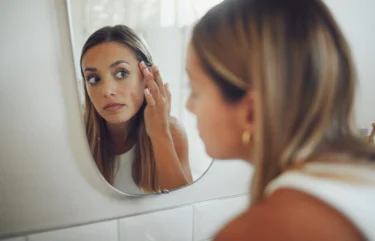
Vitamin E may help reduce the pigmentation caused by UV radiation while vitamin C plays a vital role in depigmentation of the skin. Using a combination of both vitamins may have a greater effect on reducing depigmentation than using just one vitamin8.




While a lot of research has shown that vitamin E has positive effects on the skin, more long-term studies are required to corroborate these benefits.
Studies have found that Vitamin E might have an interaction with warfarin, a blood thinner used by heart patients. I suggest you consult your physician before using Vitamin E capsules and discuss your present medications to avoid any complications15.
Dr. Siddharth Gupta, B.A.M.S, M.D (Ayu)
Using vitamin E capsules for the face needs a little caution due to the potential side effects and possible interactions with certain medicines.
Also Read: Healthy Skin Tips: Research-Backed Strategies for a Glowing Complexion
You should avoid vitamin E capsules on the face if you have.
In my experience, few people may encounter allergic reactions such as itching, skin rash, hives, and swelling of the face, lips, tongue, or throat on using vitamin E capsules15.
Dr. Rajeev Singh, BAMS
Before selecting a vitamin E capsule you should:
Also Read: Home Remedies For Tanned Skin
Thanks to its antioxidant powers and potential benefits, vitamin E can help improve your skin health. But remember, do not rush into any new skincare product. Start with a patch test, and if you have any concerns or skin conditions, it is advisable to consult a healthcare professional. With proper care, vitamin E may be a simple yet potent addition to your skincare regime.
Also Read: Red Spots on Skin: Causes, Symptoms, Treatment and More!
Yes, you can break open a capsule and apply the oil directly to your face or any problem areas, like dark spots. But before doing so, you should always do a patch test in case you may be allergic.
Vitamin E helps most skin types. But super sensitive, very oily, or acne-prone skin might not adjust well with it.
How often you use the vitamin E capsule depends on your specific skincare needs and product type. Usually, using it two to three times a week is safe. However, it is always a good idea to discuss it with your healthcare provider for personalised advice.
Using vitamin E on your face may cause skin reactions and allergic reactions in some people10. Always test a little bit of vitamin E oil on your skin before using it and consult a healthcare professional if you have doubts.
For some individuals, especially those with oily or acne-prone skin, vitamin E might cause breakouts. Always test a small patch of your skin first and keep an eye on how your skin reacts when you start using vitamin E.
Disclaimer: The information provided here is for educational/awareness purposes only and is not intended to be a substitute for medical treatment by a healthcare professional and should not be relied upon to diagnose or treat any medical condition. The reader should consult a registered medical practitioner to determine the appropriateness of the information and before consuming any medication. PharmEasy does not provide any guarantee or warranty (express or implied) regarding the accuracy, adequacy, completeness, legality, reliability or usefulness of the information; and disclaims any liability arising thereof.
Links and product recommendations in the information provided here are advertisements of third-party products available on the website. PharmEasy does not make any representation on the accuracy or suitability of such products/services. Advertisements do not influence the editorial decisions or content. The information in this blog is subject to change without notice. The authors and administrators reserve the right to modify, add, or remove content without notification. It is your responsibility to review this disclaimer regularly for any changes.
Skin tags, while not dangerous, can still annoy you and affect how you look. They often occur when your skin rubs against skin or clothing1. Even though they are harmless, many people want to remove them for aesthetic reasons or because they can get irritated.
This article will cover all you need to know about skin tags. You’ll learn what they are, why they appear, and the risk factors. We’ll discuss about home remedies and other products you may buy to remove skin tags, coupled with safety measures to follow. You’ll also learn when to reach out to a doctor and explore professional skin tag removal options. Lastly, we’ll go over how to care for your skin after the skin tags have been removed and steps to avoid future formation of skin tags.
Did you know?
Skin tags are harmless growths that usually don’t cause health issues, but can still bother you. Before starting any removal process, it’s key to understand what skin tags are and correctly identify them.
Skin tags, also called acrochordons, are small, soft lumps of skin that arise when skin rubs together. Usually, they are between 2 and 5 millimeters in size but can grow much larger. Skin tags can appear anywhere on the body but are often found near skin folds, like the neck, underarms, torso, eyelids, and inner thighs. They are often the same colour as your skin or darker, and usually don’t hurt unless irritated2.
We don’t know the exact cause of skin tags yet. Still, several known factors can increase your chances of getting these skin growths, which are listed below.
Before taking a swing at home remedies, be sure that it’s a skin tag and not something more serious. Ask a health professional if unsure. We’re about to list a few common home remedies for skin tags, how to use them, and the safety measures to bear in mind.
Safety Considerations: Keep in mind that removing skin tags yourself comes with risks like infection, bleeding, and scarring. If you feel discomfort in any way during or after applying home remedies, get in touch with a healthcare professional immediately. It’s vital to follow all guidelines and to only use clean, sanitized tools when trying these remedies.

This oil is known for its antiviral and antifungal traits and may prove to be a useful home remedy3.
How to apply?
Precautions
Don’t use pure tea tree oil and test it on a small bit of your skin before using it on a skin tag to check for allergies this is known as a patch test. Stay away from the eye area with this oil.
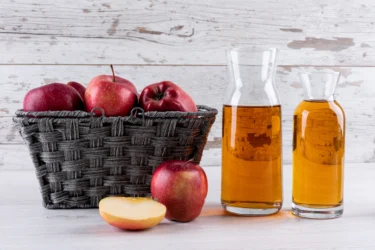
This vinegar is known for its acidic nature, which some say may help skin tags to shrink and drop off4.
How to use?
Risks and precautions
Be careful with apple cider vinegar as it can irritate the skin or cause burns. Be sure not to put it near the eyes and look out for signs of skin reactions while using it.
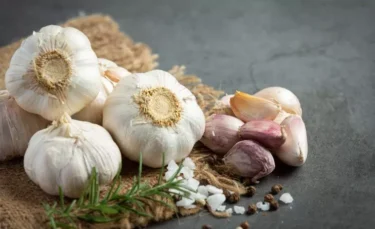
Some think garlic’s anti-inflammation might make skin tags look better5.
Application and precautions
Note, the strong smell of garlic might put some people off. And be careful if you have sensitive skin, as garlic can cause irritation.
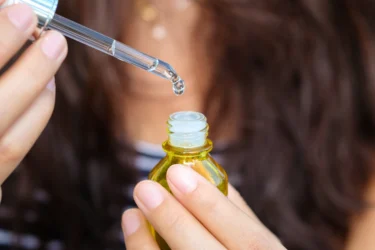
Vitamin E is known for its antioxidant traits, which may fend off wrinkles and keep skin healthy6. Rubbing liquid vitamin E onto a skin tag might make it fall off in a few days.
Usage and benefits
Ensure that you do not have an allergy to vitamin E before using it on your skin. Also, know that using vitamin E near the eyes can be irritating.

Some say banana peels have antioxidant traits, which might help dry out skin tags7.
How to use?
Benefits
Using banana peels to remove skin tags costs little and is not invasive. Still, there isn’t much scientific proof that it works. So, you’ll need a lot of patience with this method, as it may take some time before you see any results.
Recently I came across a study that suggested skin tags can sometimes indicate a higher risk of heart and blood vessel problems. This is because people with skin tags often have other health issues like being overweight, high cholesterol, high blood pressure, insulin resistance, and increased inflammation in their bodies11.
Dr. Siddharth Gupta, B.A.M.S, M.D (Ayu)
For those not into home remedies, there are many over-the-counter (OTC) products to help you remove skin tags. Remember though, it’s best to talk to a health professional if you doubt using OTC products.

These creams can be found in loads of stores but may work better for some than others. It’s key to buy a cream that won’t irritate your skin. Be wary of creams holding salicylic acid and tea tree oil, as these might cause your skin to get red.

Such kits, or cryotherapy kits, use deep cold to kill unwanted skin tissue. These kits can be found in most drugstores and need to be used carefully so as not to hurt the surrounding skin. Always keep to the kit’s instructions and watch the skin area where you have applied the kit for bad reactions.

Skin tag removal bands, also known as ligation bands, work by cutting off the blood flow to the skin tag. This method takes time but might cause problems like infection, bleeding, and scarring. On the other hand, skin tag removal patches hold medicines that make the skin tag dry up and fall off. Results vary, and these patches could irritate the skin for some people.
Bands are wrapped around the base of the skin tag. This stops blood flow which kills the cells in the tag. The skin tag then dries up and falls off. Skin tag removal patches usually have medicines that slowly break down the surrounding tissue. This leads to the skin tag falling off.
Removal bands and patches may work, but DIY removal has risks. Be sure to keep everything clean and follow all instructions to lessen the risk of infection, bleeding, and scarring. Also, monitor the affected area for any unusual signs. If you have any bad reactions, talk to a health professional straight away.
To my knowledge, skin tags are way more common than you think. It has an estimated occurrence ranging from 50 to 60% among the general population12.
Dr. Rajeev Singh, BAMS
While home remedies and OTC products may help some people, there are times when it’s better to get help from a professional. Here are some such situations, described below.
Make sure to see a doctor if the following happens.
It’s crucial for a health professional to check and confirm that your skin growth is a harmless skin tag and not a more serious skin issue.
There are some situations when home remedies and OTC products are a no-go. Ask for professional help to remove a skin tag if:
It’s not widely known that skin tags, typically associated with humans, can also manifest on our furry friends, such as dogs. While common in older canines, these skin tags can present in various forms and are generally harmless. Yet, if you observe any alterations in their size, shape, or color, or if they cause discomfort to your pet, it’s advisable to seek evaluation from a veterinarian promptly.
Dr. Smita Barode, B.A.M.S, M.S.
If home remedies and OTC products don’t suit you, or if you want a quick fix, professional skin tag removal could be best. Health professionals offer different surgical methods to remove skin tags safely and swiftly.
After removing a skin tag professionally, you need to care for the area well to promote healing and stop infection.
If you understand why skin tags appear, you may try steps to lower their chances of forming.
Skin tags are harmless but sometimes vexing lumps that crop up at several body parts. If you decide that it’s needed, there are many home remedies, OTC products, and professional methods available to remove them. Don’t forget to be careful and follow safety measures when trying home remedies. For the best results and to keep risks low, consider asking a healthcare professional for skin tag removal. Aftercare is crucial to avoid infection and healing well. Knowing potential causes and risk factors for skin tags may help you take steps toward stopping them from forming.
Also Read: Healthy Skin Tips: Research-Backed Strategies for a Glowing Complexion
You may try several methods to remove skin tags at home, like using tea tree oil or apple cider vinegar. But these come with risks, including infection, bleeding, and scarring. It’s safer to consult a healthcare professional for the correct skin tag test and removal.
Keeping a healthy weight, managing diabetes, and sorting any hormonal imbalances may help lower the chance of skin tags forming. But, as things like genetics and infections can also lead to skin tags, completely avoiding them may not be possible.
Home removal methods come with risks like infection, bleeding, and scarring. Poor technique or unclean equipment increases these risks. Seeing a healthcare professional ensures proper removal and lowers these risks.
Once a skin tag is fully removed, it won’t grow back. But new skin tags may arise in the same spot or nearby.
Health insurance plans typically do not cover skin tag removal as it’s often looked at as a beauty-enhancing procedure. However, if a skin tag harms your physical or mental health, your insurance plan may provide coverage.
1. Pandey A, Sonthalia S. Skin Tags. [Updated 2023 Jul 31]. In: StatPearls [Internet]. Treasure Island (FL): StatPearls Publishing; 2025 Jan-. Available from: https://www.ncbi.nlm.nih.gov/books/NBK547724/
2. Healthdirect Australia. Skin tags (acrochordons) [Internet]. Melbourne: Healthdirect Australia; 2025 Mar [cited 2025 Nov 13]. Available from: https://www.healthdirect.gov.au/skin-tags
3. Carson CF, Hammer KA, Riley TV. Melaleuca alternifolia (Tea Tree) oil: a review of antimicrobial and other medicinal properties. Clin Microbiol Rev. 2006 Jan;19(1):50-62. doi: 10.1128/CMR.19.1.50-62.2006. PMID: 16418522; PMCID: PMC1360273. Available from: https://pmc.ncbi.nlm.nih.gov/articles/PMC1360273/
4. Luu LA, Flowers RH, Gao Y, Wu M, Gasperino S, Kellams AL, Preston DC, Zlotoff BJ, Wisniewski JA, Zeichner SL. Apple cider vinegar soaks do not alter the skin bacterial microbiome in atopic dermatitis. PLoS One. 2021 Jun 2;16(6):e0252272. doi: 10.1371/journal.pone.0252272. PMID: 34077434; PMCID: PMC8172074. Available from: https://pubmed.ncbi.nlm.nih.gov/34077434/
5. Pazyar N, Feily A. Garlic in dermatology. Dermatol Reports. 2011 Apr 28;3(1):e4. doi: 10.4081/dr.2011.e4. PMID: 25386259; PMCID: PMC4211483. Available from: https://pmc.ncbi.nlm.nih.gov/articles/PMC4211483/
6. Keen MA, Hassan I. Vitamin E in dermatology. Indian Dermatol Online J. 2016 Jul-Aug;7(4):311-5. doi: 10.4103/2229-5178.185494. PMID: 27559512; PMCID: PMC4976416. Available from: https://pmc.ncbi.nlm.nih.gov/articles/PMC4976416/
7. Hikal WM, Said-Al Ahl HAH, Bratovcic A, Tkachenko KG, Sharifi-Rad J, Kačániová M, Elhourri M, Atanassova M. Banana Peels: A Waste Treasure for Human Being. Evid Based Complement Alternat Med. 2022 May 13;2022:7616452. doi: 10.1155/2022/7616452. PMID: 35600962; PMCID: PMC9122687. Available from: https://pmc.ncbi.nlm.nih.gov/articles/PMC9122687/
8. Tribonias G, Papaefthymiou A, Zormpas P, Seewald S, Zachou M, Barbaro F, Kahaleh M, Andrisani G, Elkholy S, El-Sherbiny M, Komeda Y, Yarlagadda R, Tziatzios G, Essam K, Haggag H, Paspatis G, Mavrogenis G. Endoscopic Local Excision (ELE) with Knife-Assisted Resection (KAR) Techniques Followed by Adjuvant Radiotherapy and/or Chemotherapy for Invasive (T1bsm2,3/T2) Early Rectal Cancer: A Multicenter Retrospective Cohort. J Clin Med. 2024 Nov 18;13(22):6951. doi: 10.3390/jcm13226951. PMID: 39598095; PMCID: PMC11594537. Available from: https://pubmed.ncbi.nlm.nih.gov/39598095/
9. Dyck PKV, Hockaden N, Nelson EC, Koch AR, Hester KL, Pillai N, Coffing GC, Burns AR, Lafontant PJ. Cauterization as a Simple Method for Regeneration Studies in the Zebrafish Heart. J Cardiovasc Dev Dis. 2020 Oct 3;7(4):41. doi: 10.3390/jcdd7040041. PMID: 33022937; PMCID: PMC7711552. Available from: https://pubmed.ncbi.nlm.nih.gov/33022937/
10. Prohaska J, Jan AH. Cryotherapy in Dermatology. [Updated 2023 Sep 15]. In: StatPearls [Internet]. Treasure Island (FL): StatPearls Publishing; 2025 Jan-. Available from: https://www.ncbi.nlm.nih.gov/books/NBK482319/
11. Sari R, Akman A, Alpsoy E, Balci MK. The metabolic profile in patients with skin tags. Clin Exp Med. 2010;10:193‑7. doi:10.1007/s10238-009-0086-5. Available from: https://link.springer.com/article/10.1007/s10238-009-0086-5
12. Pandey A, Sonthalia S. Skin Tags. [Updated 2023 Jul 31]. In: StatPearls [Internet]. Treasure Island (FL): StatPearls Publishing; 2025 Jan-. Available from: https://www.ncbi.nlm.nih.gov/books/NBK547724/
Disclaimer: The information provided here is for educational/awareness purposes only and is not intended to be a substitute for medical treatment by a healthcare professional and should not be relied upon to diagnose or treat any medical condition. The reader should consult a registered medical practitioner to determine the appropriateness of the information and before consuming any medication. PharmEasy does not provide any guarantee or warranty (express or implied) regarding the accuracy, adequacy, completeness, legality, reliability or usefulness of the information; and disclaims any liability arising thereof.
Links and product recommendations in the information provided here are advertisements of third-party products available on the website. PharmEasy does not make any representation on the accuracy or suitability of such products/services. Advertisements do not influence the editorial decisions or content. The information in this blog is subject to change without notice. The authors and administrators reserve the right to modify, add, or remove content without notification. It is your responsibility to review this disclaimer regularly for any changes.
Next Page »« Previous Page